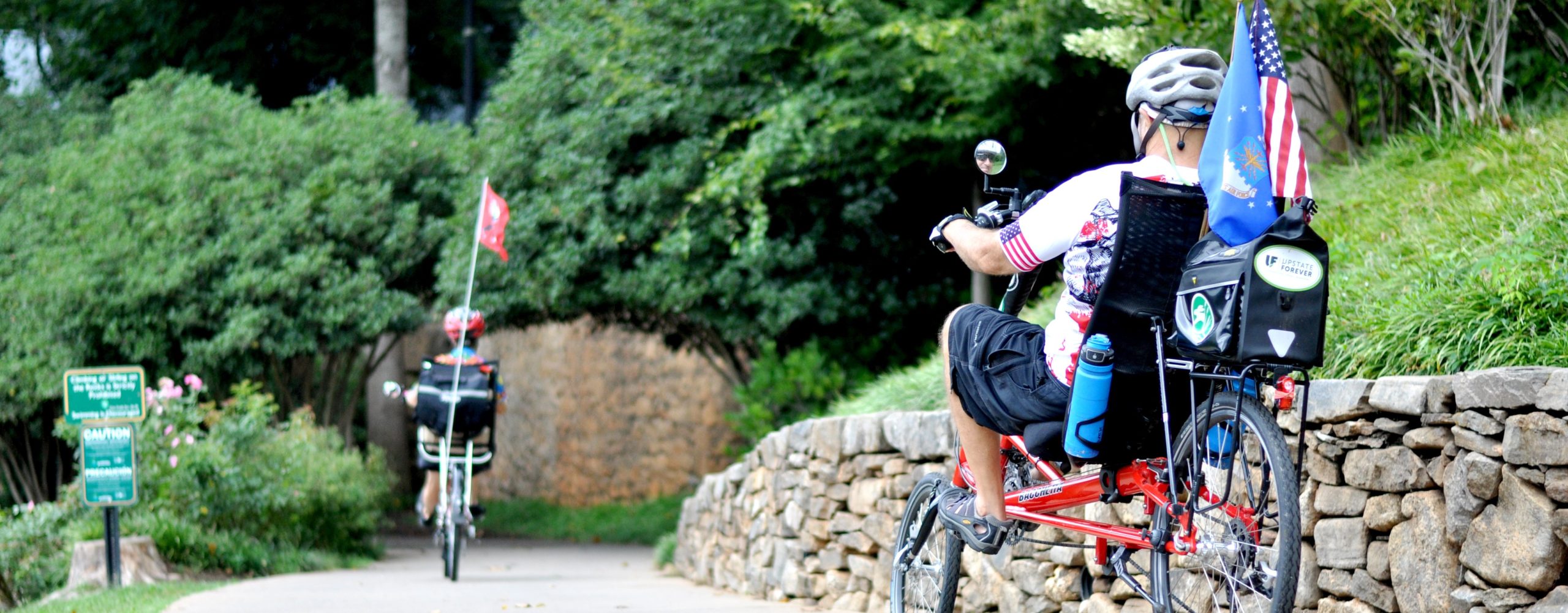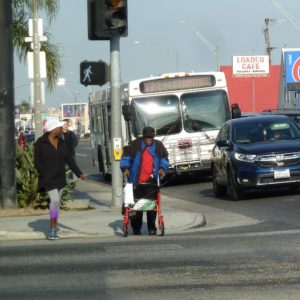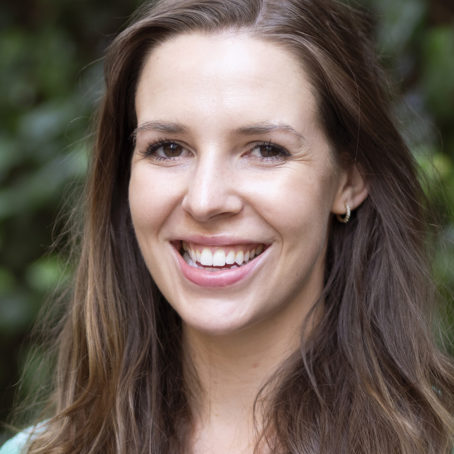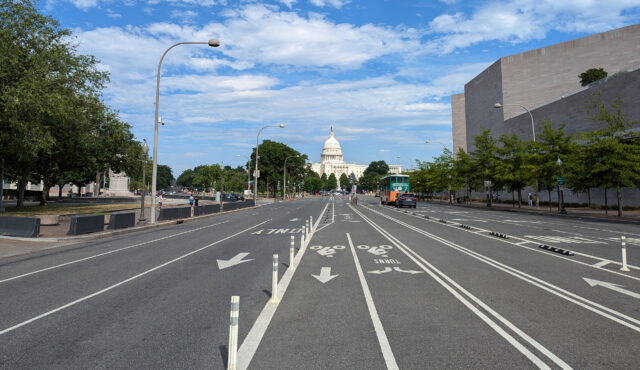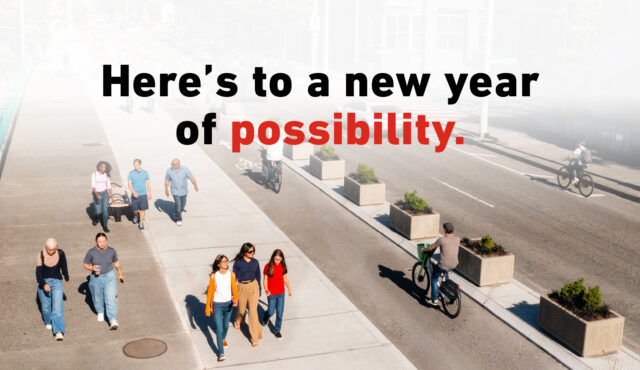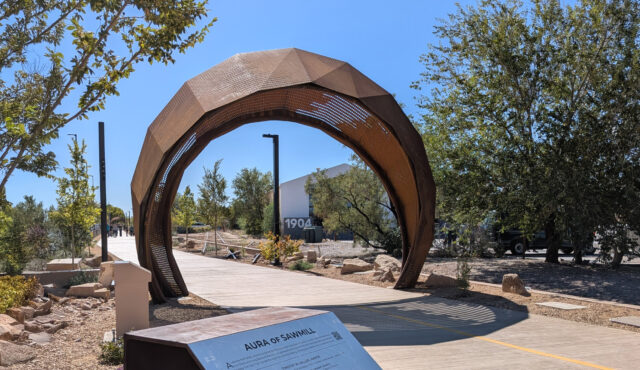
Planning for all ages and abilities means more than just creating comfortable and safe walking and bicycling facilities—it means reframing our entire planning process. The story below was informed by my experiences working with people with disabilities and older adults on transportation projects at the local level.
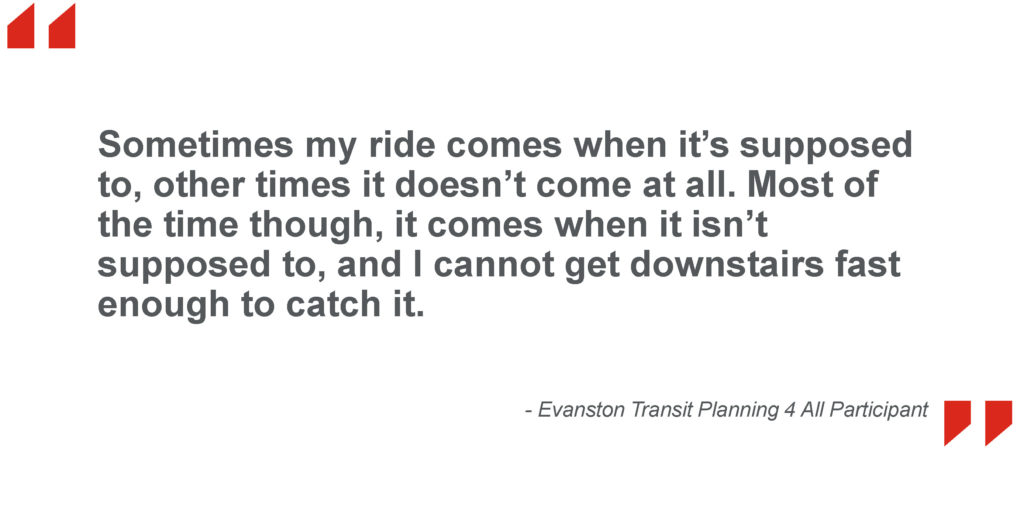
On the Ground in Evanston, IL
As the transportation and mobility coordinator for the City of Evanston, IL, I had the pleasure of leading the City’s Transit Planning 4 All grant project from 2016 to 2017. My job was to work with city staff and community stakeholders to develop an on-demand pilot shuttle service for people with disabilities and older adults, develop policy suggestions for the City’s Senior Subsidized Taxi Fare program, and measure the project’s use of inclusionary planning practices. We had one year, $85,000, and no real idea of where to start. I should clarify, though: by “we,” I mean City staff and me. We soon discovered that the community we were serving knew exactly what the first steps should be.
First, an important note: the Transit Planning 4 All grant encouraged us to include and consider the needs of people with disabilities and of older adults in our project. Prior to kicking off the project, the internal project team acknowledged that the planning profession has historically lumped these two groups together (along with other “vulnerable roadway users,” such as children). We recognized that this practice ignored the different needs, experiences, and abilities that people with disabilities and older adults carry with them.
To counterbalance this phenomenon, we worked as a project team to:
- Use specific, self-identified language that aligned with the people and community groups that we were working with,
- Respect community members’ individual needs in meeting spaces and processes, and
- Recognize the intersectionality of community members’ identities.
Many of the community members who volunteered their time, shared their experiences, and guided the project self-identified as a person with a disability and/or as an older adult. While this blog post focuses primarily on lessons learned from including people with disabilities in a planning process, it is important to note the intersectional and layered natured of the community members’ identities, and the project’s additional focus on older adults.
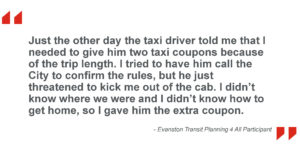 A Community-wide Challenge
A Community-wide Challenge
The impetus for the on-demand pilot shuttle and revisions to the taxi program came from years of reported conflicts and mistrust between the local taxi industry and users of the City’s Senior Subsidized Taxi Fare program. Additionally, recent concerns about the decline of the taxi industry from 2013 to 2016, and the rise of ride-hailing services like Uber and Lyft, encouraged us to think about how riders currently serviced by taxis would be impacted by changes in the industry.
We reached out to contacts across Evanston and formed a working group with representatives who identified as a person with a disability, an older adult, or both; people who cared for people with disabilities and/or older adults; and people who worked for or volunteered for an organization that served people with disabilities or older adults. We also had representatives from the local paratransit provider and the local university.
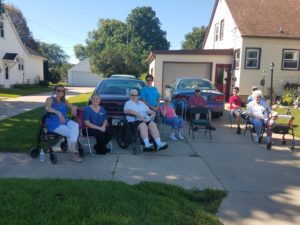 Meeting People Where They Are
Meeting People Where They Are
The working group developed a survey for people with disabilities and older adults to understand where they wanted to go and how they wanted to get there. The majority of the survey was written by the working group, and one member checked the survey to make sure it was understandable for a person using a screen reader. In addition to hosting the survey online, we also printed the survey in large-print font and provided pre-stamped return envelopes for the surveys. We delivered the printed and stamped surveys to community and recreation centers around the area, gave copies to the working group members for them to share with their networks, and held workshops at multi-family housing developments that served people with disabilities and older adults.
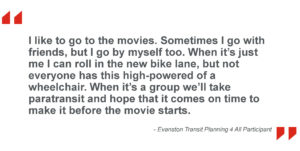 To Make Transit Work for People with Disabilities, Work with People with Disabilities
To Make Transit Work for People with Disabilities, Work with People with Disabilities
Through the survey responses and workshop sessions, City staff began to understand the gaps and challenges people with disabilities and older adults faced when using the transportation system. We were astonished by the barriers our community members faced when going to the doctor, shopping for groceries, or visiting friends. We were also surprised by the creative lengths people had to go to when trying to make their travel needs fit into the available transportation systems. Whether it be linking together trips from multiple transit service providers for hospital visits or having to clear their entire day’s schedule for a 15-minute appointment taken by paratransit, our community members were going to great lengths to get where they needed to go.
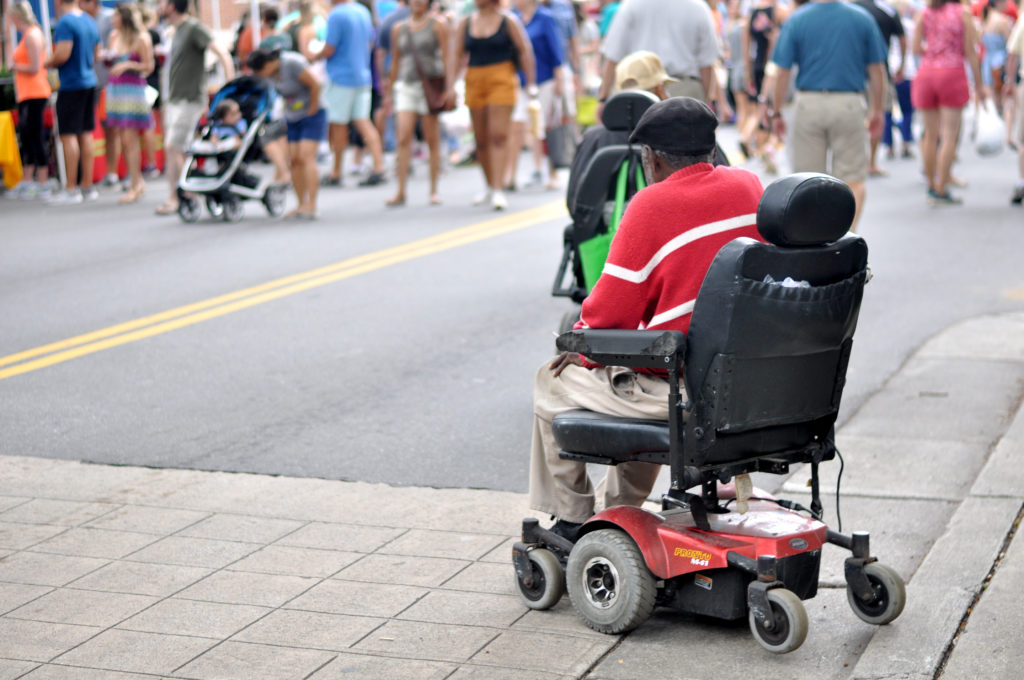 We also were surprised to learn about community members’ interest in increasing their use of technology to book, pay for, and manage their trips. Multiple community members with disabilities shared that they would prefer to use apps to manage their trips, as they felt it would make it easier for them to control the trip request process. Additionally, other community members highlighted their desire for streamlined trip payment processes that worked across service providers, and for a payment form that would not make it obvious to their driver that they were using a subsidized ride fare.
We also were surprised to learn about community members’ interest in increasing their use of technology to book, pay for, and manage their trips. Multiple community members with disabilities shared that they would prefer to use apps to manage their trips, as they felt it would make it easier for them to control the trip request process. Additionally, other community members highlighted their desire for streamlined trip payment processes that worked across service providers, and for a payment form that would not make it obvious to their driver that they were using a subsidized ride fare.
At the end of the year-long planning process, the project team launched a pilot shuttle service and expanded the subsidized taxi program. While the pilot shuttle service is no longer in operation today, the expanded and revised subsidized taxi program continues to improve and align more closely with the recommendations provided by the project’s working group and stakeholders. Today, income-eligible people with disabilities and older adults in Evanston can sign up for a Transportation 4 Evanston Debit Card to travel outside of Evanston using taxis, or any other form of ground transportation (e.g. ride-hailing apps, public transit, paratransit, Amtrak). Participants receive a matching fund from the City to use on the card, which they are able to use for trips of their choice. This expanded service provides community members with the mode variety, payment security, and personal freedom that they told us that they wanted.
Lessons for Continuing this Work
While the project team learned countless lessons from our community members along the way, three key lessons stood out about inclusionary planning:
- Planning is for everyone. Don’t expect people with disabilities to be superheroes to attend your meeting. Planners and engineers should structure planning processes, meetings, discussions, and spaces to work for all people.
- Challenge your assumptions. People with disabilities use a variety of modes to get around. They bike, walk, roll, scoot, drive, fly—you name it. Consequently, it is crucial to engage people with disabilities no matter the nature of the project.
- Experience matters. Remember that community members have already lived the experiences that you are trying to capture in a study. People with disabilities can bring invaluable insights and recommendations to the planning table based on their experiences. Planners and engineers should recognize that they cannot intuit the needs and experiences of all community members. Instead, they should focus on developing methods that support access to and meaningful participation in planning processes for people of all abilities.
We’ll further explore the topic of inclusive planning for people with disabilities in an upcoming resource guide. For more thoughts on how to best address the mobility needs and desires of older adults, see Rethinking How We Talk about Older Adults and Mobility, by Carol Kachadoorian.
